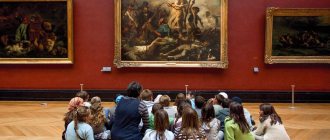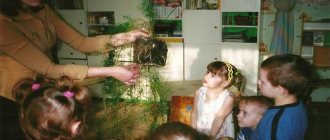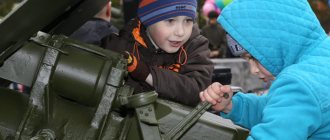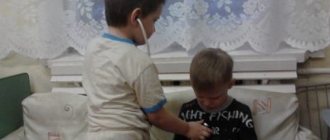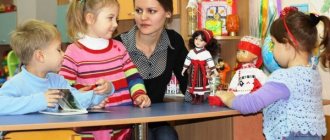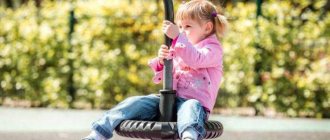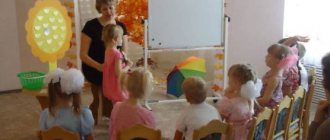The system of aesthetic education implies such a pedagogical influence on the child that contributes to the development of his ability to perceive the beauty around him, to distinguish the beautiful, harmonious from the ugly. Over time, young people should not only be able to appreciate the beauty of nature and human relationships, but also experience the need for aesthetic activity.
Aesthetic
education
is one of the areas of pedagogy, the main goal of which is to teach a person to understand and appreciate beauty.
Aesthetic education has a personal orientation and should cover the following aspects of children’s development:
- Formation of needs in the field of art and artistic values.
- Cultivating the ability for artistic perception, which would cover many areas of aesthetic phenomena.
- Mastering knowledge to understand art, developing the ability to express one’s own judgments and views on the artistic embodiment of reality.
The concept of aesthetic education
Aesthetic taste does not develop suddenly, but over many years. It arises in the process of working on the aesthetic growth of a child’s personality, when parents and teachers try to develop creative abilities in him.
This area of education has a complex impact on the individual, permeates all areas of activity, affects the depth of thinking and feelings, life attitudes, and selectivity. It is closely interconnected with all areas of education, especially moral, since it has an emotional impact, makes one experience a range of complex feelings, acts as an organizer of spiritual growth, and a regulator of behavior.
The development of a person’s aesthetic culture is indicated by the absence of vulgarity in behavior and the ability to appreciate the poetry of high feelings, relationships, and creative work.
Children not only need to have a need for aesthetic activity, but also actively apply the acquired system of knowledge and skills in everyday life. Children's creativity trains memory, forms mental reactions, and teaches planning. The very first lessons of aesthetics, using examples of natural phenomena and the native land, give rise to the foundations of patriotism, love for loved ones, and the Motherland.
The importance of aesthetic education
Humanity began to understand its relevance since ancient times. Many thinkers and poets argued that with its help it was possible to establish a society of harmony and justice and that “beauty will save the world.”
The educational power of art lies in the fact that with its help a person is able to experience such intense feelings as joy and sadness, love and hatred, admiration and disappointment. Once experienced after reading a fairy tale or theatrical production, they are transferred by the child to real life phenomena.
Culture and literature play no less a role in the spiritual life of society than science. With their help, young people also learn about the world, develop their consciousness, and strengthen their views and beliefs.
The potential of natural aesthetic possibilities is not always realized if feelings are not “humanized” by education. Having impeccable hearing, you may not understand the beauty of a piece of music, but having excellent eyesight, you may not be able to appreciate a masterpiece of fine art or the splendor of nature.
The task of educators is to develop in students the ability to perceive and appreciate the beauty in the surrounding nature, work and even everyday life.
Objectives of education in aesthetics
Aesthetic education of preschool children is conventionally divided into two groups, different in direction, but very closely interconnected. Each group pursues its own goals and uses its own means.
The first group relates to the formation of the ability to perceive beauty. This includes the ability to understand and feel beauty in objects of art, human misdeeds, and nature. The development of artistic taste and the formation of the need for contact with beauty is also included in the tasks of the first group.
The tasks of the second group are related to teaching the child to create something beautiful on his own: draw pictures, sculpt and design objects, sing, dance and move to a melody, express his thoughts beautifully.
Moreover, it is very important that both tasks of both groups are closely intertwined with each other. From the very beginning, as soon as they have the opportunity, ability and means for this, children must not only perceive the beauty in the surrounding reality, but also independently create something new and equally beautiful. They should have a clear awareness that they have a close connection with the world, and themselves are capable of making it more pleasant and attractive.
Aesthetic education in the family
The task of parents is to teach the child to see, hear and understand everything that surrounds him. It is necessary to develop artistic taste and learn to identify the beauty around you from early childhood. You need to try to interest the child in modeling and drawing, try your hand at singing or music.
The ability to perceive beauty, enjoy works of art, and later to create independently is born gradually. Some children show a passion for drawing, others for music; talents manifest themselves as the children become able to perceive and understand beauty.
In a family setting, it is important to thoughtfully organize aesthetic education. A child’s artistic abilities can be harmed by excessive vanity of parents who praise their child in every possible way. Inflated self-esteem becomes an obstacle to learning and stifles talent. The result is that more modest but persistent peers achieve greater creative success over time.
Musical education in kindergarten
Parents need to carefully select material for comprehension. Radio and TV running for hours give superficial impressions and do not force you to think. Fiction provides vivid images and demonstrates the logic of the plot. Preschoolers eagerly listen to fairy tales and world classics; they learn the ability to read expressively through examples of artistic reading by famous artists.
Even the most outstanding works can leave you indifferent if they are not performed properly. The same applies to painting, sculpture, music.
The place of aesthetic culture of education in society
Aesthetic culture is one of the elements of public culture, one of its oldest forms, which arose in the era of primitive man. Only over time did it acquire a somewhat independent meaning, but even now it appears in the form of a kind of philosophy, reflecting a person’s rich attitude to the world, his desire for perfection and ideal.
Since ancient times, the idea of beauty has been interpreted quite broadly: health, wealth, and everything that was useful were considered beautiful. Beauty was considered not only from the point of view of aesthetics, but also ethics, economics, and a perfect object or state was recognized as beautiful.
In our society, there is a clearly visible gap between the social significance of aesthetic culture and its real state. Traditional cultural and moral values are replaced by rational and logical ones, which leads to a lack of emotionality in relationships, rudeness and cynicism, and a primitivization of life guidelines.
Depending on a specific era of life, ideas about beauty may change. The concept of beauty is rather inherent in external form. The beautiful does not depend on time and carries within itself harmony, perfection, and humanistic spiritual components.
The modern busy, overpopulated world is educationally untenable. It produces only educated consumers, and the principle of aesthetic education presupposes the creation of conditions for development, the creative disclosure of each individuality.
Methods and means
In pedagogy, many methods have been developed to help develop a person’s taste. However, so far none of them can replace the personal example of loved ones. The psychological and moral environment in which a person lives and grows is also important. By personal example, the student learns the following things:
- Communicate;
- Take care of yourself;
- Treat yourself and others.
Other methods are closely related to the means by which the effectiveness of education is achieved. We list the most popular of them:
- Conversations;
- Creative workshops;
- Classes in clubs, sections;
- Visiting exhibitions, theaters, museums;
- Participation in festivals, competitions of intellectual and creative content;
- Home creative evenings.
We have already said that the success of aesthetic education largely depends on when it was started. The sooner a child begins to comprehend the beauty of the reality around him, the faster he will form the correct aesthetic ideals, which he will strive for throughout his life.
Play is the second most effective opportunity to educate a harmonious personality who knows how to appreciate beauty. Being part of the game scenario, its protagonist, the child accumulates correctly formulated aesthetic impressions and delves into the rules of moral behavior. The game prepares the individual to “enter” the life arena. The development of speech helps to form an idea of the richness of language and culture and instills the need for reading.
Participation in holidays, concerts, exhibitions is the next link in the development of taste through direct participation in the creation of beauty. Visiting theaters, museums, exhibitions, and concerts improves the inclinations of taste, forms and improves the aesthetic ideal.
Objectives of aesthetic education
The ability to notice what surrounds people, be it a twig, a bug, the sound of a waterfall or the singing of a bird, is the basis for the education of aesthetic feelings, which is not limited to art. If a child loves nature, the harmony of which is incomparable to that created by man, he will be able to enjoy a piece of music or painting.
Aesthetic education also manifests itself in everyday life. A child’s personality is influenced by the house in which he lives, the way his parents eat, dress, and communicate. Competent speech, a beautifully set table, neatly dressed and combed parents - all these are components of upbringing, which is not a simple sum of knowledge. The ability to draw and play the violin is also important, but the main thing is to see the harmony around and participate in its creation.
The goal of developing a personal culture is to cultivate in it:
- perception, the ability to find beauty in natural phenomena, art, relationships;
- feelings that give an emotional assessment of everything that surrounds;
- needs, the need for aesthetic experiences, contemplation and analysis of beauty, participation in its creation;
- tastes, the ability to analyze everything that surrounds for compliance with aesthetic standards;
- ideals, ideas about the beauty of nature, the beautiful in man, art.
Methods of experiencing beauty
Personal example is recognized as the most effective method of aesthetic education. Educators and parents lay the foundation and pass on to their students the most important criteria of artistic consciousness. Along with personal example, which includes a style of behavior, a manner of communication, a set of moral qualities, and appearance, the methods include:
- conversations;
- lessons and additional classes in clubs, studios;
- participation in excursions;
- trips to theaters, museums, exhibitions, work at festivals and competitions, matinees, evenings;
- creative homework.
Aesthetic education in a preschool educational institution
Aesthetic education of preschool children
Education and training of preschool children.
Topic: “Aesthetic education”
The meaning and tasks of aesthetic education of preschool children
Aesthetic education is a purposeful, systematic process of influencing a child’s personality in order to develop his ability to see the beauty of the surrounding world, art and create it. It starts from the first years of children's lives. Aesthetic education is a very broad concept. It includes the education of an aesthetic attitude towards nature, work, social life, everyday life, and art. However, the knowledge of art is so multifaceted and unique that it stands out from the general system of aesthetic education as a special part of it. Raising children through art is the subject of artistic education. In turn, aesthetic education is part of the comprehensive communist education of children. Its connection with moral education is especially close. Acquaintance with beauty in life and art not only educates the child’s mind and feelings, but also contributes to the development of imagination and fantasy. In the process of implementing aesthetic education, it is necessary to solve the following tasks: systematically develop aesthetic perception, aesthetic feelings and ideas of children, their artistic and creative abilities, and form the foundations of aesthetic taste. From the first years of life, a child unconsciously reaches out to everything bright and attractive, rejoices in shiny toys, colorful flowers and objects. All this gives him a feeling of pleasure and interest. The word “beautiful” enters children’s lives early. From the first year of life, they hear a song, a fairy tale, look at pictures; simultaneously with reality, art becomes the source of their joyful experiences. In the process of aesthetic education, they undergo a transition from an unconscious response to everything bright and beautiful to a conscious perception of beauty. Aesthetic perception of reality has its own characteristics. The main thing for him is the sensory form of things - their color, shape, sound. Therefore, its development requires a large sensory culture. Beauty is perceived by a child as a unity of form and content. Form is expressed in a combination of sounds, colors, lines. However, perception becomes aesthetic only when it is emotionally colored and associated with a certain attitude towards it. Aesthetic perception is inextricably linked with feelings and experiences. A feature of aesthetic feelings is disinterested joy, a bright emotional excitement that arises from meeting the beautiful. The teacher must lead the child from the perception of beauty and emotional response to it to understanding and the formation of aesthetic ideas, judgments, and evaluations. This is painstaking work, requiring the teacher to be able to systematically, unobtrusively permeate the child’s life with beauty, and in every possible way to ennoble his environment. Preschoolers have access to almost all types of artistic activities - writing stories, inventing poems, singing, drawing, modeling. Naturally, they have great originality, which is expressed in a naive, direct reflection of reality, in extraordinary sincerity, in faith in the truthfulness of what is depicted, in a lack of concern for viewers and listeners. Already at this stage, the development of children’s artistic creative abilities occurs, which are manifested in the emergence of an idea, in its implementation in activity, in the ability to combine their knowledge and impressions, in great sincerity in expressing feelings and thoughts. The uniqueness of children's creativity also lies in the fact that it is based on such a pronounced feature of preschoolers as imitation. It is widely reflected in children’s play activities—the figurative realization of their impressions of the world around them. It is in play that the creativity of preschoolers first manifests itself. A game that arises on the initiative of children is characterized by the presence of a plan. At first it is still unstable, one plot gives way to another; The older the children, the more complete and focused the plan becomes. Thematic role-playing creative game is characterized not only by the presence of a plan in the selection and definition of a theme and plot, but also by creative imagination in their implementation. “Let the train,” wrote N.K. Krupskaya, “let them be built from chairs, let the house be built from wood chips. During the game, the child learns to overcome difficulties, gets to know his surroundings, and looks for a way out of the situation.” The creative imagination of children is also manifested in the fact that they often deliberately combine different plots for their games: they take material from fairy tales, stories, from life, from television and theatrical productions. In other words, they combine their knowledge, impressions of what they saw and heard, combining them into one whole. Often preschoolers pretend to play something that does not exist in reality. For example, playing one of their favorite games - astronauts, they go to Venus, Mars and other planets. The sincerity of children in play finds its most vivid expression. It is not for nothing that the great Russian director K. S. Stanislavsky told actors that they should learn sincerity and truthfulness in art from playing children. Just as in play, children’s creativity is manifested in other types of their artistic activities. In drawing, modeling, stories, songs, the child satisfies his need for an effective, figurative expression of his impressions. And here, first, the idea is born, and then the means of implementing it; children combine their impressions obtained from the perception of various works of art. And in this case, the child remains as sincere as in the game: he does not just copy what he saw, but conveys his attitude towards it. Thus, in preschool age, the sprouts of creativity are observed, which are manifested in the development of the ability to create a plan and its implementation, in the ability to combine one’s knowledge and ideas, in the sincere transmission of thoughts, feelings, and experiences. However, in order to develop artistic and creative abilities in children, they need appropriate training. In the process, they master ways of figuratively expressing and depicting their ideas in words, singing, drawing, dance, and dramatization. Education encourages the child to consciously express artistic expression, evokes positive emotions, and develops abilities. The purpose of teaching artistic skills is not only to give children knowledge and skills in singing, drawing, reading poetry, etc., but also to arouse their interest and desire for independent creative activity. Here is a poem by three-year-old Natasha, composed by her for her friend: Nastya, get dressed! The sun is shining in the morning. It's time to go to kindergarten. Thus, while mastering certain artistic skills, the child uses them, making his own, albeit small, contribution to decorating the life of the family, kindergarten, and his peers. In the development of children’s artistic and creative abilities, a special role belongs to the personality of the teacher, his culture, knowledge, and passion. Aesthetic taste is manifested in the fact that a person receives pleasure, spiritual pleasure from meeting true beauty in art, in life, in everyday life. Aesthetic taste is a broad concept; it includes not only understanding and enjoying deep, beautiful works of art, but also understanding the beauty of nature, work, life, clothing.
Basic means of aesthetic education in kindergarten
Aesthetic education of children is carried out by familiarizing children with the aesthetics of everyday life, with the beauty in work, in nature, social phenomena, and the means of art. Teaching a child to feel and understand the beauty of life is a big and difficult task that requires long-term work by adults. The walls of the home, the things that surround a child from the first years of life, have great impact. Comfortable furniture, a harmonious combination of color spots, objects of art, the general style of decorating the room - all this, perceived by sight and touch, is reflected in the memory and consciousness of the baby. The aesthetics of everyday life in a kindergarten is manifested in artistic simplicity, in a thoughtful selection of household items, where each thing has its own place, where there is nothing superfluous. The painting of the walls should be calm, light colors. The requirements for the design of a kindergarten are determined by the tasks of protecting the life and health of children and the content of educational work with them. The main ones are: 1. Expediency, practical justification of the situation. 2. Purity, simplicity, beauty. 3. The right combination of color and light, creating visual contrast that ensures the visibility of each object. For example, pale yellow daffodils next to the blue water of an aquarium enhance the colorfulness of the surroundings. 4. All design components must form a single ensemble. A special place in the design of the group should belong to the visual arts: paintings, prints, objects of applied art. This expands children’s aesthetic ideas, creates a basis for understanding works of art, provides artistic pleasure, and makes them want to draw a pattern, a flower, or make a beautiful toy. The subjects depicted in the paintings should be understandable to children. This is the work of people, the life of a kindergarten, landscapes, still lifes, the life of birds and animals, a fairy-tale world. In all groups, still lifes, prints depicting animals, and paintings with fairy-tale themes can be used. Landscapes are recommended for use in middle, high school and preparatory school groups. Older preschoolers show great interest in reproductions of paintings by famous artists: “The Rooks Have Arrived” by Savrasov, “Golden Autumn”, “March” by Levitan, landscapes by Shishkin, “Alyonushka”, “The Princess and the Gray Wolf” by Vasnetsov, “Girl with Peaches” by Serov, “ Lilac" by Konchalovsky and others. There should be no more than 2-3 paintings in the room. It’s good when there is one large picture that especially attracts the attention of children, and two or three smaller ones. The paintings should be well lit and not interfere with one another, so they should not be placed too close. Paintings and prints should be changed taking into account the time of year and the tasks of educational work with children. For example, it is good to hang pictures related to the topic of the upcoming conversation, reading a work of art, or playing a game. An important place in the design of a kindergarten should belong to works of folk applied art. All groups should have Khokhloma (furniture in the book corner and one or two items that change). It’s good to have a funny Dymkovo toy, gesture trays, and ceramic works. Of course, it is not enough to surround children with beautiful things; we must teach them to see beauty, take care of it, and appreciate it. Therefore, the teacher should draw their attention to the cleanliness of the room, to the beauty that flowers and paintings bring, and encourage the children themselves to try to decorate the room. All this must be learned gradually. For example, watching the nanny’s work with the children, the teacher leads them to the conclusion that she not only monitors cleanliness, but also creates comfort in the room. A well-cleaned, sparkling clean room becomes beautiful. And the children themselves gradually get used to maintaining cleanliness and order, first with the help of adults, then at their reminder, and by the older group on their own. From the first years of life, children must be taught the aesthetics of appearance combined with a culture of behavior. In this regard, one of the strongest means of influence is the example of the educator himself, the unity of his internal and external culture. Native nature serves as a powerful means of aesthetic education. Her beauty is especially vividly and deeply perceived in childhood and, imprinted in feelings and thoughts, sweeps through a person’s entire life. The teacher reveals to children the world of nature, helps them see its beauty in a drop of dew on a bud, and in the interweaving of grasses, and in the colors of the sunset... You just need to see this beauty for yourself and find words that are accessible to the child’s heart. Works of art about nature will provide him with invaluable help in this, which he must know well and skillfully use. Social life and the work of people with whom the child constantly encounters are also an important means of aesthetic education. The well-coordinated work of builders makes children want to create a good building, act together, and be attentive to each other. Descriptions of the work of sailors, pilots, teachers, and doctors not only introduce preschoolers to these professions, but also evoke a desire to imitate them. All this is reflected in their games and contributes to the education of moral and aesthetic feelings. Therefore, the teacher thoroughly prepares for excursions, during which children receive and accumulate the sensory experience they need. Excursions, when properly prepared and conducted, broaden the horizons of preschoolers, teach them to see, compare, generalize, which forms the basis for the development of creative imagination and abilities. In the process of targeted observations and excursions, the teacher draws children’s attention not only to the essential features of a particular phenomenon, but also to the beauty of coordinated work that transforms nature, to the nobility of relationships between people, built on mutual assistance, camaraderie and care for each other. What truly excites children will definitely be reflected in their games, drawings, and stories. Streets, buildings, monuments also contribute to the aesthetic and moral education of children. Getting to know their beauty and originality begins with the simplest and closest things: from the kindergarten building, from your street. With age and accumulation of knowledge, the topic of introducing children to the sights of the city and village expands. And no matter where the children live, in the older groups they are sure to be introduced to the capital of our Motherland, Moscow, its Red Square. In the process of this work, educators give children ideas about some of the architectural features of buildings and ensembles, pay attention to the originality of individual forms and lines, to the expediency of architecture, to how it fits into the natural landscape. Children reflect these impressions in construction games. Their buildings are becoming more complex and beautiful. In children's creativity, individual buildings, bridges, and train stations begin to unite into street ensembles. Art is a multifaceted and inexhaustible means of aesthetic education. It introduces children to the life of the whole country, fosters love for the Motherland, for its honest, kind, courageous people. Works of art are a rich source of joy, aesthetic pleasure, and spiritual enrichment. Many types of it are available to children: literature, music, painting, sculpture, theater, cinema. Each type of art reflects life in its own way and has its own special impact on the child’s mind and feelings. From the first years of life, children are accompanied by oral folk art and children's literature. Fairy tales occupy a special place in their lives. A. S. Pushkin gave them a high rating: “What a delight these fairy tales are... each of them is a poem.” Not everything can be expressed in words. There are shades of feelings that can be expressed more deeply and fully in music. P. I. Tchaikovsky wrote: “Where words are powerless, a more eloquent language—music—is fully armed.” Music sharpens emotional responsiveness. The child needs it. “Childhood is just as impossible without music as it is impossible without games, without fairy tales,” V. A. Sukhomlinsky was convinced of this. Fine arts are also necessary for a child. It gives him rich visual images. At holidays in kindergarten, different types of art influence children in their originality and unity. Holidays make a strong impression on preschoolers, remain in their memory for a long time and serve as an important means of aesthetic education. The demands placed on art for children are high. Works selected for preschoolers must be highly artistic and understandable. The artistic material for each subsequent age group gradually becomes more complex due to the deepening of the tasks of aesthetic education. This is taken into account in the “Kindergarten Education Program,” which defines works of art for each age group. Finally, the quality of execution of artistic works for children is very important, on which the aesthetic education of the child largely depends. The leading place in the implementation of aesthetic education belongs to kindergarten. But the role of the family is also great. Only with the unity of the influences of the kindergarten and the family is it possible to fully implement the tasks of aesthetic education. Not every child will become a musician or artist, but every child can and should develop a love and interest in art, develop aesthetic taste, an ear for music, and basic drawing skills. The teacher helps the family create the necessary conditions for the proper aesthetic education of children. He talks about the importance of everyday aesthetics, advises what to read to children, what records to buy for listening to music, and ensures that the child in the family has everything necessary for the manifestation of children's creativity: an album, pencils, paints, toys, books. Establishing continuity in the aesthetic education of kindergarten and family forms the fundamental principles of the spiritual culture that a person should have.
LITERATURE
- Babansky Y.K., Pedagogy, M., 1988 “Introduction to scientific research in pedagogy.” M., 1982
- Izmailov A.E., Folk pedagogy: pedagogical views of the peoples of Central Asia and Kazakhstan. M., 1991
- Law of the Republic of Kazakhstan “On Education”, Almaty, 1992.
- Kharlamov I.F., Pedagogy. M., 1990
- Zhuravlev I.K. Pedagogy in the system of human sciences. M., 1990
- Azarov Yu.P. The art of education. M., 1985
- Ivanov I.P. Methodology of communal education. M., 1990
- Kondrashova L.V. Collection of pedagogical tasks. M., 1987
- Ivanov I.P. Raise collectivists. M., 1982
- Yanovskaya M.T. Emotional aspects of moral education. M., 1989
- Preschool pedagogy, ed. IN AND. Loginova and P.G. Samorunova. Moscow, “Enlightenment”, 1988.
- Preschool pedagogy, ed. V.I. Yadeshko and F.A. Sokhina. Moscow. "Education". 1986.
- Bure R.S., Ostrovskaya L.F. Teacher and children. M., 1985.
- Kovalchuk Ya.I. Individual approach to raising a child. Moscow. 1985.
- Usova A.N. Teaching in kindergarten. M. 1981.
- Amonashvili Sh.A. "Hello children!". M., 1990.
- Amonashvili Sh.A. “How are you, children?”, M., 1991.
- Krupskaya N.K. About preschool education. M., 1982.
- Makarenko A.S. A book for parents. M., 1990.
- Sukhomlinsky V.A. I give my heart to children. M., 1989.
- Sukhomlinsky V.A. Raising a true citizen. M., 1991.
- Flerina E.A. Aesthetic education in kindergarten. M., 1987.
- Amonashvili Sh.A. Thoughts on humanistic pedagogy. M., 1996.
- Bespalko V.P. Components of pedagogical technologies. M., 1989.
- Gippepenreiter Yu.B. Communicate with the child. M., 1995.
- Leshchinsky V.M. Learning to manage ourselves and our children. Pedagogical workshop. M., 1995.
- Shurkova N.E. Game technologies of education. M., 2001.
- Education and training program in kindergarten. Ministry of Public Education of the Kazakh SSR. Almaty, “Mektep”, 1989.
- Model program of education and training in kindergarten. Moscow. "Education". 1984.
- Methodological recommendations for the education and training program in kindergarten. M., "Enlightenment". 1986.
- Vasilyeva A.I., L.A. Bakhturina, I.I. Kobitina. Senior kindergarten teacher. M., 1990.
- Bure R.S. Preparing children for school. M., 1990.
- Bure R.S. Raising preschoolers at work. M., 1990.
- Kossakovskaya E.A. A toy in a child's life. M., 1980.
- Flerina E.A. Game and toy. M., 1973.
- Zvorygina E.V. Children's first story games. M., 1988.
- 15. Didactic games and exercises for sensory education of preschoolers. (edited by L.A. Venger. M. 1973.)
- Raising children through play, ed. A.K. Bondarnko and A.I. Matusik, M., 1983.
- Games and activities with building materials. M., 1971.
- Mendzheritskaya D.V. To the teacher about a children's game. M. 1982.
- Mental education of preschool children. (edited by N.N. Poddyakov and F.A. Sokhin. M., 1988)
- N.F. Vinogradova. Mental education of children in the process of becoming familiar with nature. M., 1978.
- T.M.Kurylenko, G.G.Petrochenko. Tasks and exercises in preschool pedagogy.
- Kindergarten and family, ed. T.A. Markova., M., 1986.
- Raising a preschooler at work. (edited by V.G. Nechaeva, M., 1980).
- S.V.Peterina. Fostering a culture of behavior in preschool children. M., 1986.
- To the teacher about working with families. M., 1989. (edited by N.F. Vinogradova).
- Bogina T.L., Trekhova N.T. Daily routine in kindergarten. M., 1987.
- Hygienic principles of raising children from 3 to 7 years old. Compiled by V.I. Telenchin. M., 1987.
Means and methods of aesthetic development
The basis of a child’s cognitive motivation, his ethical attitudes, and attitude towards others and his homeland lies in his active practice. The productivity of aesthetic education depends on the degree of connection with objective activity. The development of personality occurs the more successfully the earlier it is included in creativity.
Play is the most productive way to develop creative potential. Through play activities, the child is involved in communication, masters elements of culture, and accumulates aesthetic impressions. During the game, preparation takes place to enter the world of art, to turn it into a means of understanding everything that surrounds.
Speech development classes form an understanding of the diversity of languages and cultures of the native country, awaken a love of reading, and provide communication skills. A special place is occupied by trips to the theater and expressive reading clubs.
Classes on the surrounding world instill love for nature and patriotism. A special role is assigned to the school museum; the formation of the traditions of the educational institution requires attention.
Extracurricular activities to study the culture of the peoples of Russia , holding events and holidays together with parents, participating in folk games and theatrical performances, rituals provide an opportunity to comprehensively solve the problem of aesthetic development of children and at the same time their spiritual and moral education.
Art lesson planning becomes especially important. They continue organically during extracurricular activities. The children successfully apply the knowledge acquired in art lessons in real creative practice in classes in drama clubs and fine arts groups.
Closely connected with this educational area are trips to theaters and cinema, excursion trips, and communication with cultural and artistic figures.
note
The life experience of children at each stage of development is quite small. They will not soon be able to distinguish aesthetic phenomena from the general mass. Introducing creativity fosters a child’s aesthetic needs, the ability to enjoy art, awakens interest in it, and develops aesthetic taste.
MAGAZINE Preschooler.RF
Conditions, means and role of the teacher in the aesthetic education of childrenAesthetic education is one of the areas of pedagogy, the main goal of which is to teach a person to understand and appreciate beauty. A.P. Chekhov said: “Everything in a person should be beautiful: face, clothes, soul, and thoughts . In order for a person to create beauty in himself and around him, he must first of all learn to hear, see, understand, and most importantly, feel beauty. Translated into Greek, feel and sensual will be the word aesthetics. Hence the concept of aesthetic education as the education of sensuality. Aesthetic education of preschoolers is a process through which the child develops the ability to notice the beauty of the environment, love art and be involved in it. The influence on the child’s personality begins from the first year of his life; it must be targeted and systematic.
The goal of aesthetic education is to teach a child to see and understand the beauty around him.
Cultivating a sense of beauty is not limited to artistic and musical perception. This is a whole system that includes the child’s attitude to social work and life, to everyday life and nature.
The role of aesthetic education in child development
From the first days of life, a child is attracted to bright shiny toys and objects, colorful colors and attractive elements. Satisfied interest gives them a feeling of joy and pleasure. The concept of “beautiful” is recognized by the child very early. Listening to fairy tales or songs, looking at pictures and toys, they get a lot of positive emotions and experiences. These unconscious impulses, in the process of aesthetic education and development of preschool children, gradually transform into a conscious perception of beauty. The task of adults is to form the foundations of harmonious taste, develop the artistic and creative abilities of preschool children, their aesthetic feelings and ideas.
Aesthetic education is an important aspect of the full development of a child, because it promotes:
- Development of the emotional and sensory sphere;
- The child’s sensory culture is formed (children listen to the sounds of the forest, birdsong, rustling leaves; examine the beauty and color of trees; inhale the aromas of flowers, meadows, fields);
- Aesthetic ideas about actions and behavior patterns are formed;
- Aesthetic education enhances: mental education (imagination, auditory and visual memory develops, knowledge about folk arts and music expands; physical education (music, artistic expression, colorful paraphernalia contribute to the formation of tempo, rhythm of movements, plasticity, positive attitude towards physical culture) ; moral education, because in the beauty of nature and art lies the greatest educational force, which forces the child to observe the rules of respect for nature and the environment.
The means of aesthetic education of children are objects and phenomena of the surrounding reality selected by the teacher and specially organized for the education of children. These include:
- Aesthetics of everyday life means teaching a child to see beauty in the ordinary (beautiful curtains, napkins, toys, furniture). If the environment is aesthetic, beautiful (not necessarily rich), if the child sees beautiful relationships between people, hears beautiful speech, there is reason to hope that from an early age he will accept an aesthetic environment as the norm. Three rules that make everyday aesthetics a means of aesthetic education: live in beauty, notice beauty, maintain and create beauty around you.
- Works of art. They are used in the design of everyday life, during training, and in independent activities. For this purpose, they select works of everyday and fairy-tale painting (portraits, still lifes, landscapes), graphics (prints, engravings, book illustrations), small forms of sculpture (faience, plaster, wood), works of folk applied art (ceramics, glass, folk decorative items, etc...)
- Nature. Growing up among nature, a child learns to see the harmony, beauty, and richness of colors of each season, and to reproduce his impressions in oral stories, drawings, etc. All this is accompanied by the teacher’s stories that nature is a powerful and perfect creator of beauty; painters, composers, and writers draw inspiration from it. 4.Special training. The formation of ideas about beauty, skills in artistic and creative activity, and the development of aesthetic assessments are facilitated by special training for preschoolers in kindergarten. To do this, I use various types of classes, artistic and didactic games, holidays, matinees, excursions, walks, watching performances, presentations, etc.
- Holidays. They are associated with children’s vivid aesthetic experiences, desires to test themselves in different genres of art, and performances in colorful costumes. Preparing for the holiday, children's participation in creating performances, and anticipation of the festive action form a special pre-holiday collective mood.
- Independent artistic activity of children. It is an important means of aesthetic education of preschool children. In the process of artistic activity, they realize their creative ideas, inclinations, which can subsequently develop into the ability for artistic creativity. To develop independent artistic activity, special centers are created with the necessary equipment and materials that children can use freely. The teacher takes care of the variety of children’s activities, the combination of different types of artistic activities: visual, artistic and speech, theatrical and playful, musical. 7. A museum, cinema, and cultural center can play a significant role in aesthetic education. Visiting cultural centers also forms the first skills of artistic and aesthetic perception in childhood. The basis of the process of aesthetic education is the activity of the teacher and the child, aimed at developing his abilities to perceive beauty, artistic values and productive activity. The personality of the teacher also plays an important role in the aesthetic education of preschoolers. The teacher himself must be an example of moral behavior and be a well-rounded personality, since the child relies on his own feelings and emotions. It is necessary to competently select the content of the proposed material and determine it in accordance with the age and individual capabilities of preschoolers. Also, it is necessary to introduce into joint activities special methodological actions and techniques that ensure active and meaningful assimilation of knowledge and skills. The teacher introduces to the beautiful, encourages empathy, emotional responsiveness to the beauty in the world around us.
The key role of a kindergarten is to create conditions for the formation of a harmoniously, intellectually developed personality.
- Creation of an aesthetic subject-development environment: beauty and cleanliness in the group, harmonious combination of colors of curtains, walls, bedspreads in the bedroom; aesthetic thoughtfulness of furniture and equipment.
- Saturation of groups with objects of art: paintings, panels, vases, objects of folk and applied arts.
- Presence of book, art, theater and music centers in the group.
- It is necessary to monitor the external appearance of the people around you: the teacher, junior teacher and other employees of the preschool institution (beautiful, neat, good manners of behavior and communication).
- It is necessary that the groups have corners of nature, on the street - a vegetable garden, flower beds, green spaces.
- It is necessary to hold holidays and entertainment for children and parents with music, poetry, skits, and dances.
In our group, conditions have been created for the aesthetic education of children. Created (slide) for a variety of artistic activities, in which children engage both under the guidance of teachers and on their own initiative. For creative activity, it is very important that the environment surrounding the child is beautiful, cozy, and comfortable at home. This liberates the child and encourages creativity. It is important not only to feel, but also to create something beautiful. Children are given the opportunity to draw, sculpt, and appliqué at any time, using different materials. The creativity center has a lot of step-by-step educational samples, visual aids, and stencils. We organize the introduction of children to decorative activities: (slide) we consider elements of decorative painting, silhouettes of folk toys, nesting dolls, thematic coloring books “Getting to Know Painting” , children love to play games such as “Learn the Painting” , “Find the Similarities and Differences of Folk Costumes” " , "What's superfluous" , etc. We got acquainted with the products of folk craftsmen, watched presentations on the creation of Russian and Vyatka nesting dolls. (slide)
We are trying to conduct more non-traditional art activities using different drawing techniques and materials (this is drawing with pokes, cotton swabs, drawing with fingers, (slide) scratching with stacks, drawing with salt, printing with a sponge, blowing a drawing from a “Blotography” , (we took part in the All-Russian competition "Blotography" . We use materials such as special stencils for glass, (slide) plaster figures, colored crayons, washable markers, wooden blanks. For modeling classes we use various waste materials, rainbow sand (slide), clay. The use of such techniques and methods develop children's imagination and creative imagination. We display the best works in a group on the "Beauty Shelf" . (slide) We teach children to use means of artistic expression (poems, proverbs, sayings, excerpts from works). Music plays an important role in the aesthetic education of children -theatrical activity. Music has a sound nature, a generalization of images, being “the art of feelings ,” as P.I. said. Chaikovsky. We try to make music sound not only in music classes, but also in everyday life, in children’s games, during exercises, and in other types of activities. The group has created a musical and theatrical center (slide), in which children enjoy playing musical instruments, (slide) participate in the dramatization of fairy tales, (slide) performances, and dramatizations. We use various types of theaters: finger theater, magnetic theater, bibabo toys, etc. d.
To enrich emotional and sensory perception, each group has conditions for introducing children to fiction. In the book center (slide) there are portraits of writers, necessary selections of literature to introduce children to them, their works, fairy tales, and folklore.
The leading place in the artistic and aesthetic development of children belongs to kindergarten. But the role of the family is also great. The result of such activities is the participation of students with their parents in competitions at the district and regional levels. Nikita Gorin took first place in the regional competition “Winter's Tale” with the craft “At the edge of the forest, winter lived in a hut . Only with the unity of the influence of the kindergarten and the family is it possible to fully implement the tasks of aesthetic education. Not every child will become a musician, artist, or writer, but every child can and should develop a love and interest in art, develop aesthetic taste, an ear for music, and basic drawing skills.
Thus, a properly organized system of work on the artistic and aesthetic education of children, the creation of conditions for aesthetic education, the organization of the educational process will create favorable conditions for the development of children’s artistic and aesthetic abilities, creative imagination and, as a result of aesthetic education, a spiritually rich , a comprehensively developed personality.
Dear teachers!
Let's cultivate in our children a sense of beauty and aesthetic perception, because this is so necessary in our time.
| Next > |
Public health and aesthetic education
The current educational system is untenable. It is in the interests of the state to replace it with one that will allow each individuality to reveal itself to the fullest, will help children determine their passions in art, science, and choose their favorite craft.
Clubs and development groups should include no more than 5-7 people, starting from the age of 5. Being away from parties, the younger generation will develop in a cultural environment, learn to feel and think.
The thinking and speech of many modern children are undeveloped; they are not able to express their feelings and experiences. The little ones need to start with music and dancing, and learn to read poetry. Older children need classes in ballet, theater, and art studios, familiarity with rhetoric, chess, astronomy, and the study of biology, archeology, and anthropology.
Where does a creative society come from, competent mentors capable of raising a moral person with a broad humanitarian outlook? We need enthusiasts, armed not only with theory, with developed programs, and with clear ideas about the goals of aesthetic education. The process is long, but inevitable, otherwise society faces degeneration.
Just as one cannot force one to love, one cannot force one to understand beauty either. The Hermitage with the Russian Museum, art books should not be on the agenda every Sunday. Children can be “filled” with knowledge. But the goal of aesthetic education cannot be a set of knowledge. This concept presupposes, first of all, the ability to see and create beauty around oneself.
Goals and objectives
The goal of aesthetic education is simple and complex at the same time: to teach a person to see beauty in all its manifestations, analyze and evaluate what he sees, and take an active part in its creation.
The tasks of raising an aesthetically developed personality are also multifaceted. They are conditionally divided into 2 groups.
Group 1 of tasks works in the following direction:
- Forms taste and a creative attitude towards the surrounding nature;
- Develops the ability to feel, hear, see beauty in nature, art, literature, and people’s actions;
- Fosters the need to contemplate beauty and excellent artistic taste.
Group 2 of tasks is aimed at developing the skills to create beauty in art and everyday life.
Only the close interaction of these tasks will allow achieving high educational results.
